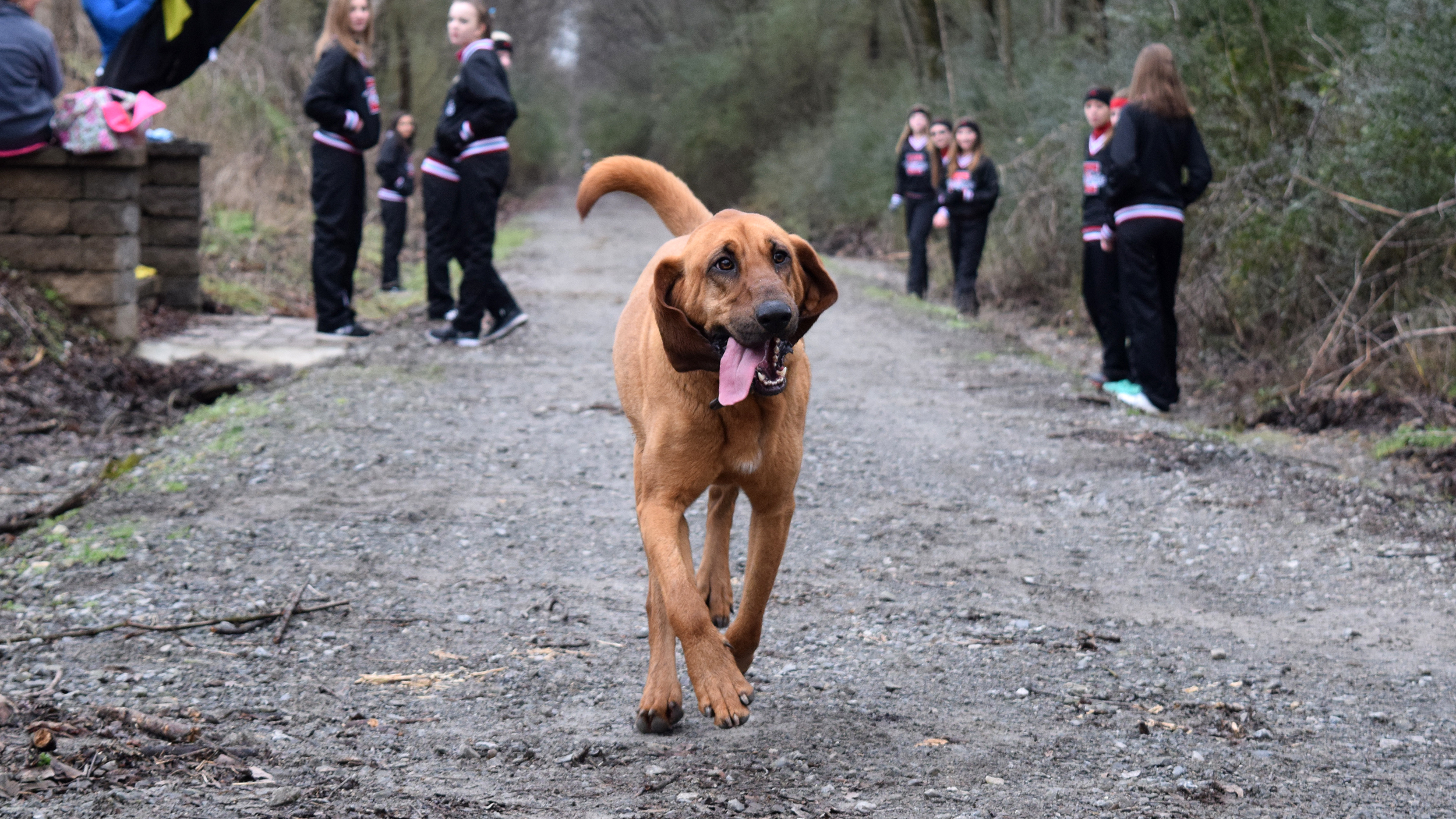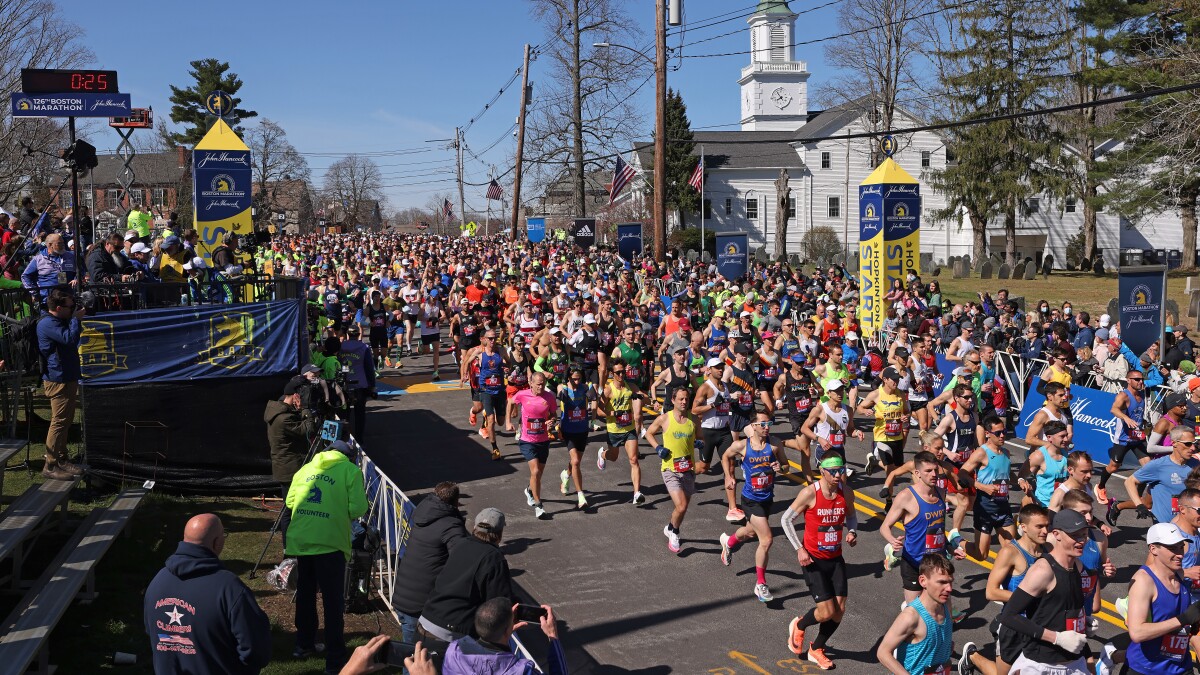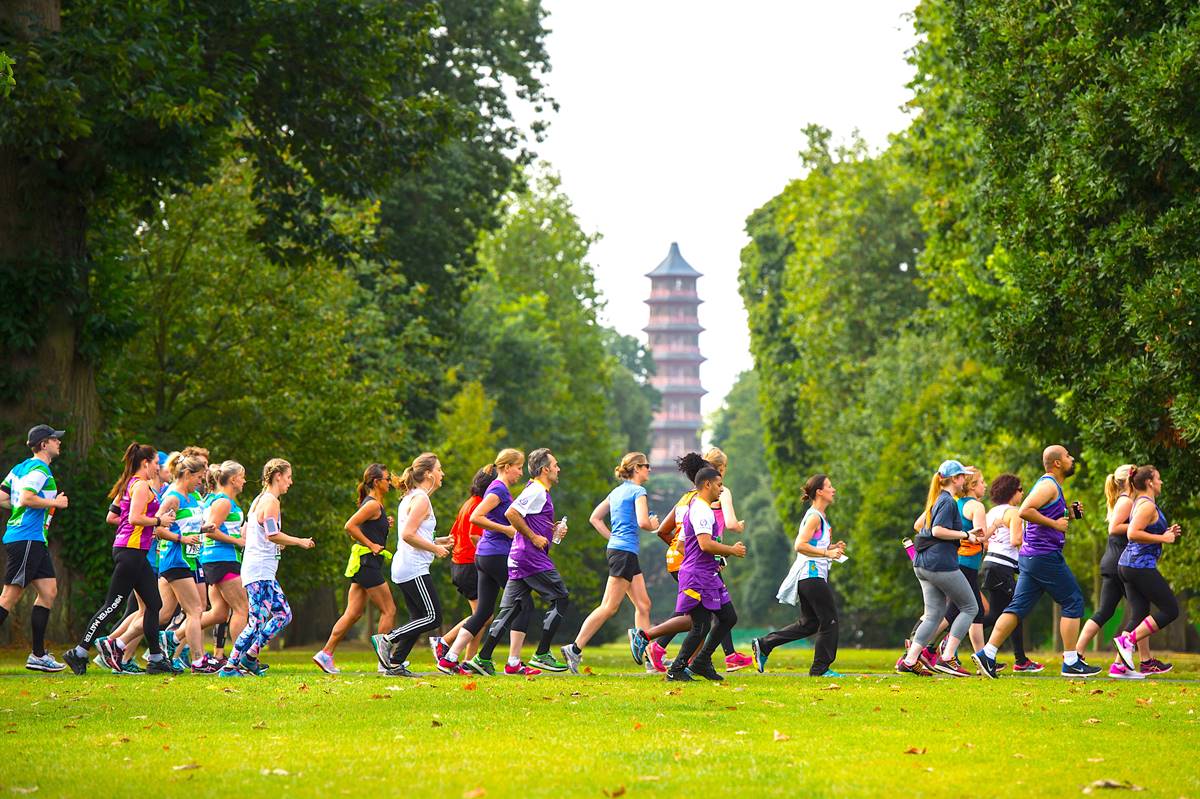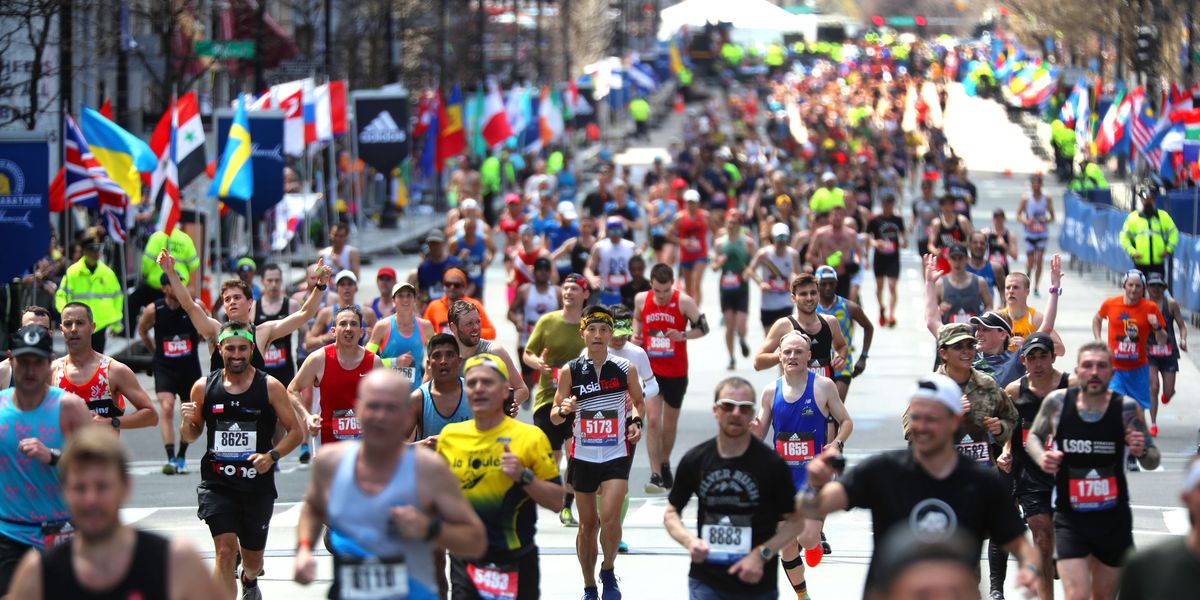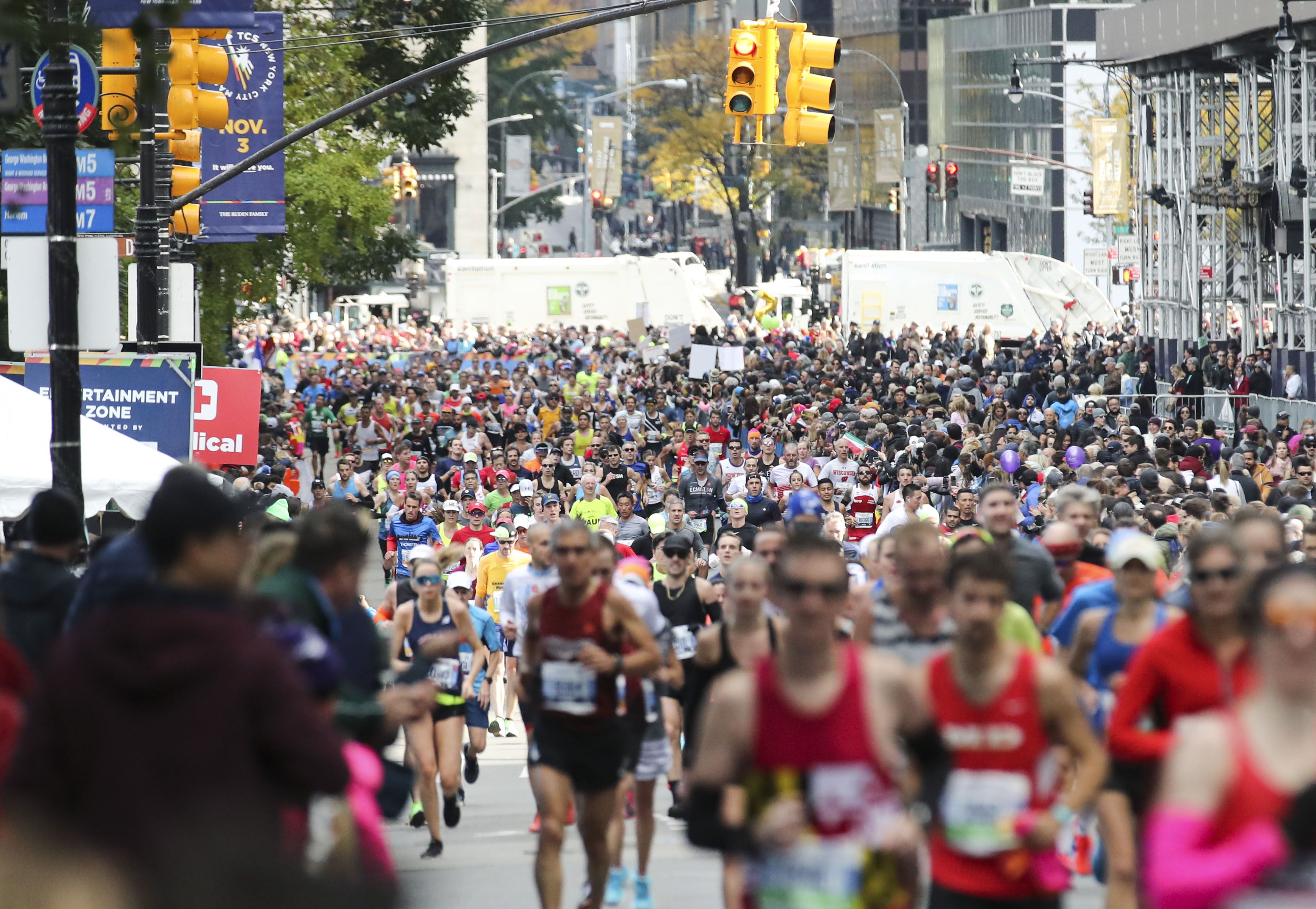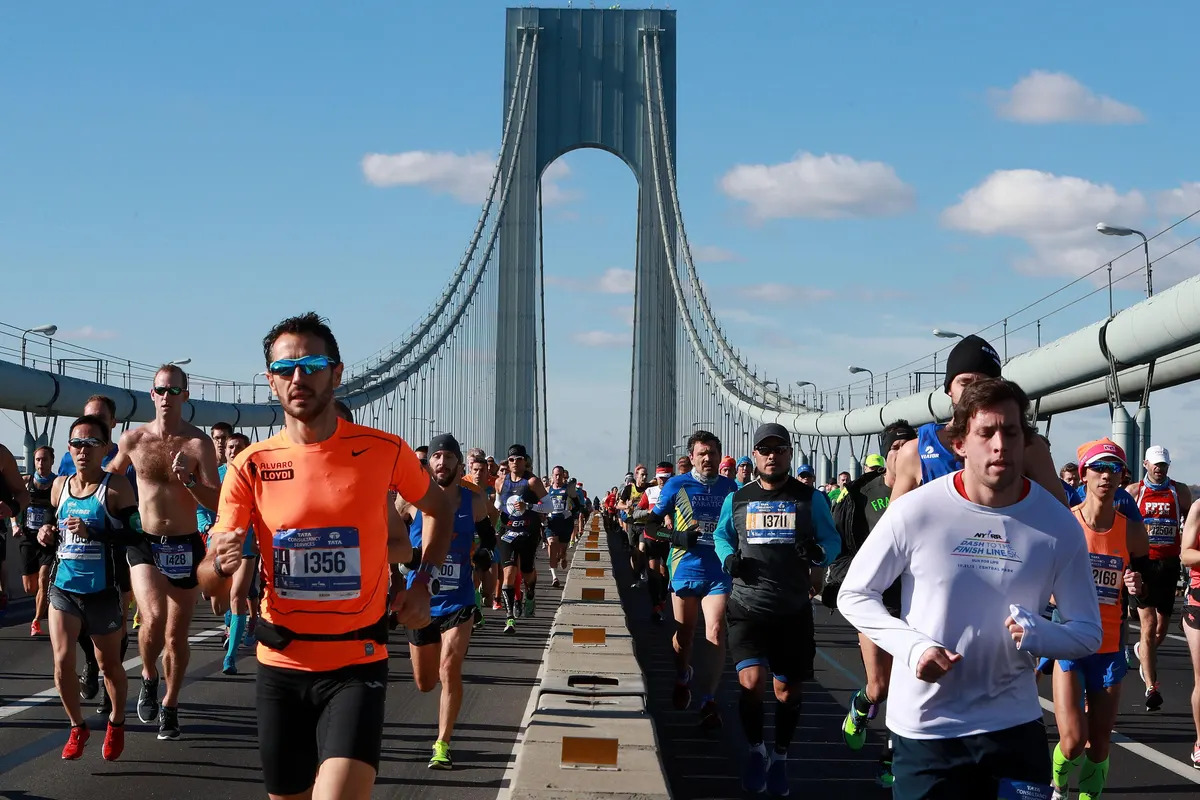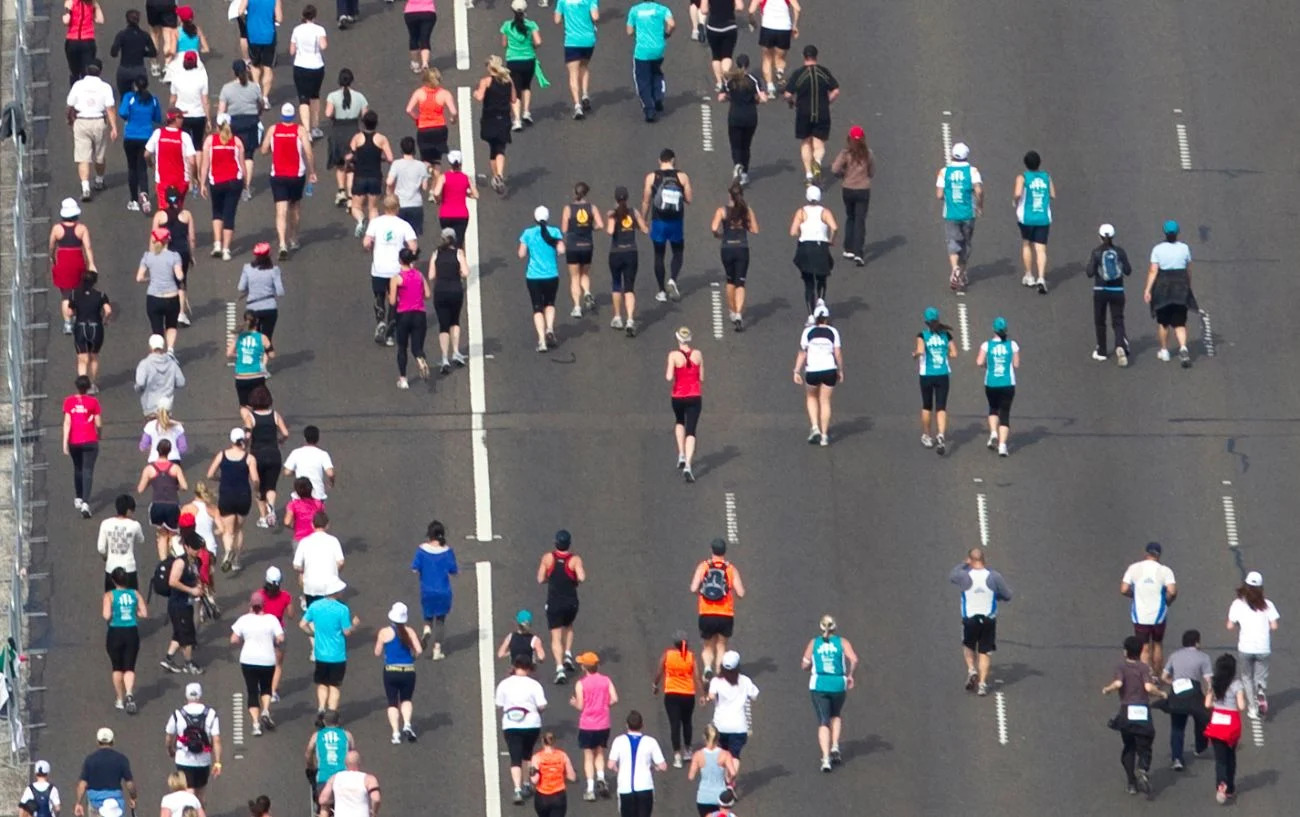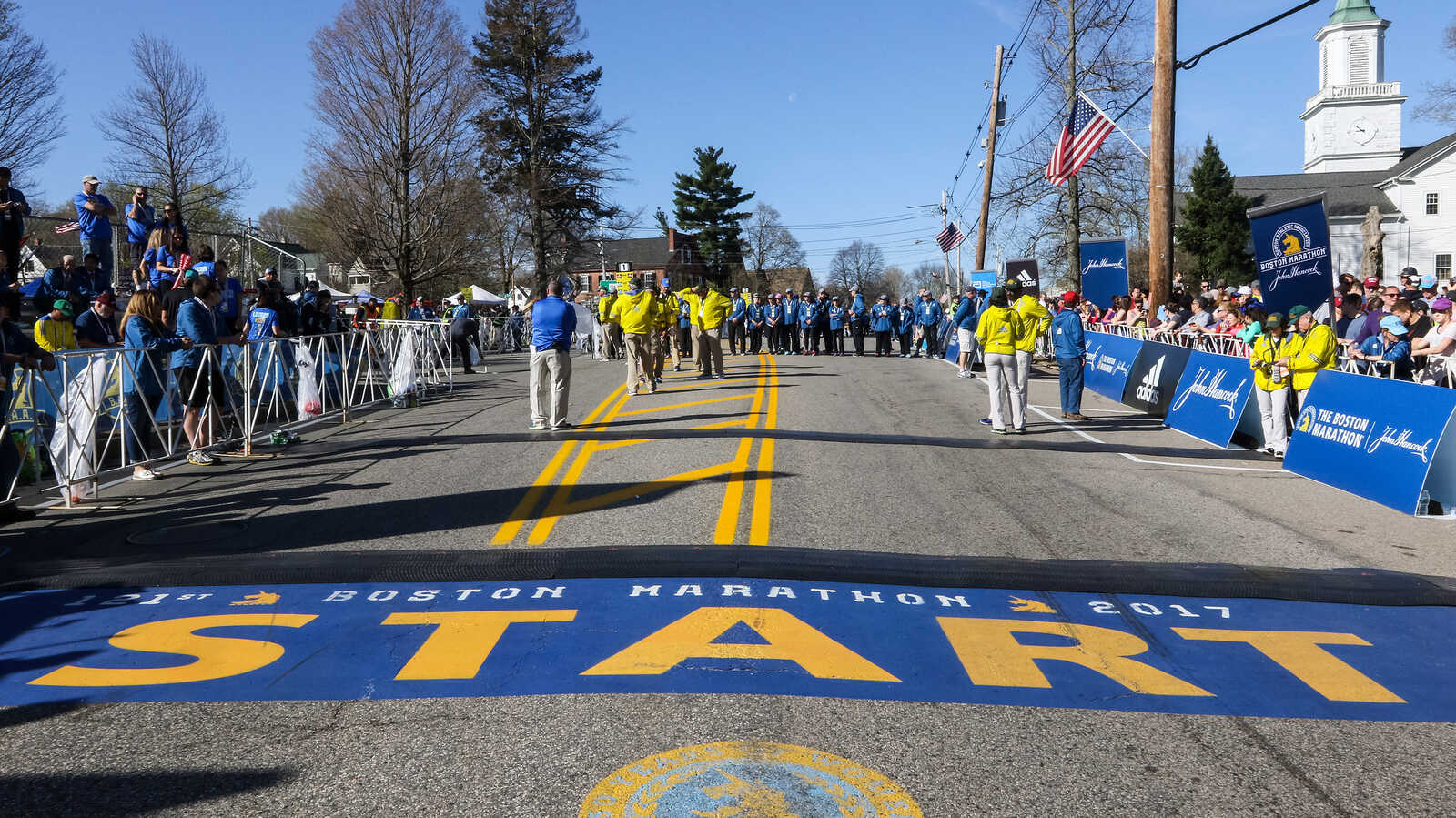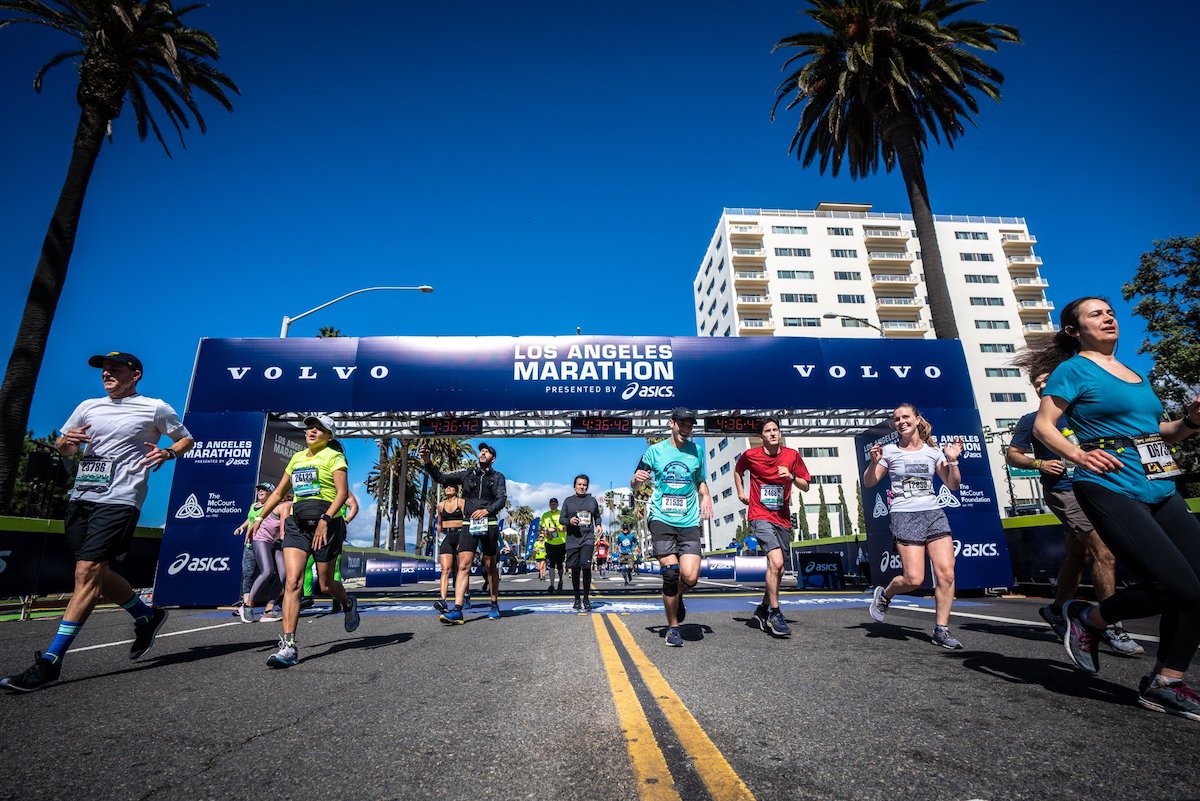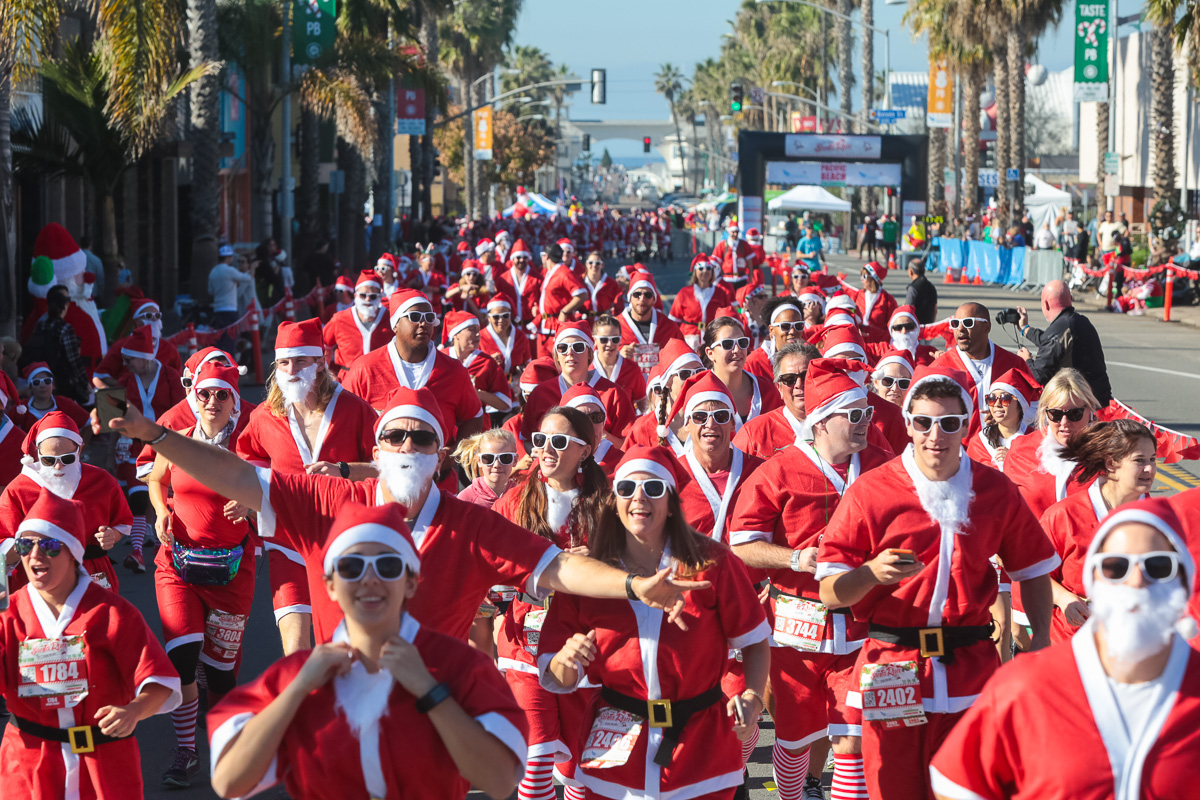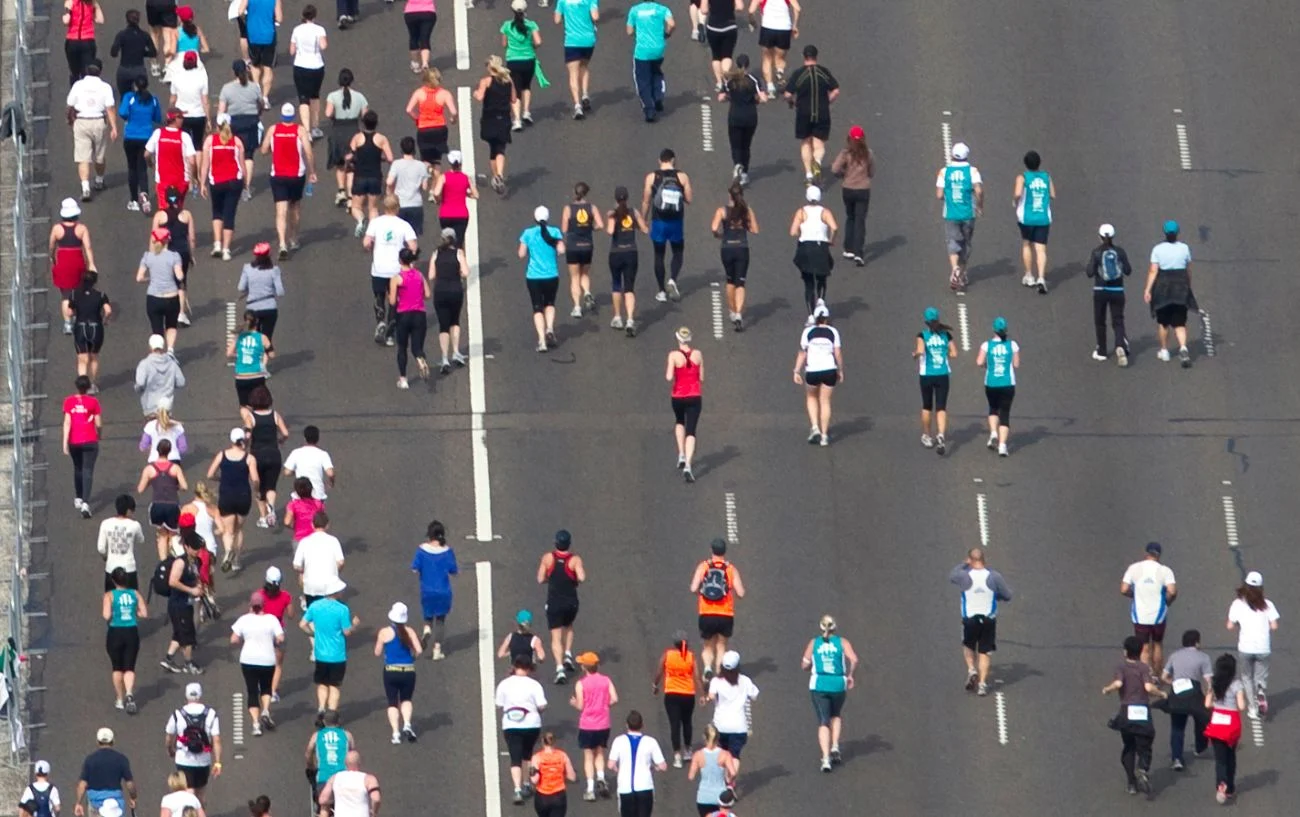

Featured
What Percent Of People Run A Marathon
Modified: January 22, 2024
Discover the featured article on what percent of people run a marathon. Gain insights into the growing popularity and aspirations of marathon runners.
Introduction
Marathons have become increasingly popular over the years, attracting thousands of runners from all walks of life. These grueling long-distance races, traditionally covering a distance of 26.2 miles (42.195 kilometers), test the physical endurance and mental fortitude of participants. Whether it’s the thrill of the competition, personal achievement, or the desire to push one’s limits, running a marathon is a remarkable accomplishment.
In this article, we will explore the factors influencing the growing popularity of marathon running, examine the demographics of marathon runners, and delve into the percentage of adults who have completed a marathon. We will also touch upon regional disparities in marathon participation, motivations for running a marathon, and the challenges faced by marathon runners.
Marathons have transcended their origins as a niche event for elite athletes and have become inclusive and welcoming to individuals of various ages, backgrounds, and fitness levels. Whether you’re a seasoned runner aiming for a personal best or a first-time participant with a goal of completing the marathon, this article will provide valuable insights into the world of marathon running.
So, lace up your running shoes, prepare to embark on a journey of determination and dedication, and join us as we explore the captivating world of marathon running.
The Popularity of Marathon Running
Marathon running has seen a significant surge in popularity in recent years. The allure of testing one’s physical and mental limits, the sense of accomplishment in crossing the finish line, and the opportunity to take part in a community of like-minded individuals have all contributed to the growing appeal of marathons.
One factor driving the increased popularity of marathons is the rise of health and fitness trends. With the growing emphasis on leading a healthy lifestyle, more and more individuals are turning to running as a way to stay active and improve their overall well-being. Marathons provide a unique challenge that pushes participants to train and work towards a specific goal, often resulting in improved cardiovascular fitness, weight management, and mental resilience.
Social media has also played a significant role in the popularity of marathon running. Platforms such as Instagram, Facebook, and Strava allow runners to connect with a vast community of fellow athletes and share their marathon journey. The ability to document training progress, race experiences, and achievements on these platforms has helped create a sense of camaraderie and motivation among runners worldwide.
Furthermore, the rise of charity partnerships has made marathons a meaningful and impactful endeavor. Many marathon events collaborate with charitable organizations, allowing participants to raise funds for important causes while accomplishing their personal fitness goals. This combination of physical and philanthropic pursuits has drawn in individuals who are not only motivated by personal achievement but also driven by a desire to make a positive difference in the world.
Marathons have also become more accessible and inclusive, attracting a broader range of participants. Gone are the days when marathons were solely reserved for elite athletes. Nowadays, events offer various categories like age groups, wheelchair divisions, and even virtual races, allowing individuals of all abilities to take part and challenge themselves.
Overall, the growing popularity of marathon running can be attributed to a combination of factors, including health and fitness trends, the influence of social media, charity partnerships, and increased accessibility. As more individuals seek to engage in physical activity, push their limits, and connect with a supportive community, the allure of marathon running continues to captivate people from all walks of life.
Factors Influencing Participation in Marathons
Participating in a marathon requires dedication, perseverance, and a willingness to push oneself to the limit. Several key factors contribute to the decision to take up the challenge and participate in these grueling long-distance races.
One significant factor influencing participation in marathons is personal goal setting. Many individuals see completing a marathon as a bucket list achievement or a way to challenge themselves physically and mentally. Setting a specific goal, such as running a marathon within a certain time frame or completing multiple marathons, provides a sense of purpose and motivation.
Another factor is the influence of social networks and peer pressure. Seeing friends, family members, or colleagues successfully complete marathons can inspire others to join in the pursuit. The sense of community and support from fellow runners can be a strong motivating factor for individuals contemplating participating in a marathon.
In recent years, the rise of fitness tracking apps and wearable technology has also played a role in motivating individuals to participate in marathons. Monitoring and analyzing personal running data, such as distance covered, pace, and calories burned, can provide insights into progress and improvements, fueling the desire to take on challenges like a marathon.
The availability and accessibility of marathon events also impact participation. With marathons taking place in cities around the world, individuals have greater opportunities to find a race that aligns with their preferences, be it a scenic route, a big-city atmosphere, or a unique theme. The option to choose from different distances, such as full marathons, half marathons, or relay races, caters to a wide range of abilities and interests.
The financial aspect is another factor to consider. The cost associated with participating in a marathon, including registration fees, travel expenses, and accommodation, can influence an individual’s decision. However, many events offer charity partnerships or fundraising opportunities that alleviate the financial burden and allow participants to contribute to a meaningful cause.
Finally, the influence of professional athletes and celebrities cannot be overlooked. Well-known athletes and public figures who participate or endorse marathons can inspire and motivate individuals to get involved. Their visibility and achievements serve as a reminder that marathons are not solely for elite runners but can be embraced by anyone with determination and dedication.
Overall, the decision to participate in a marathon is influenced by a combination of personal goals, social influences, technological advancements, event availability, financial considerations, and the inspiration provided by role models. Understanding these factors helps shed light on the motivations behind marathon participation and highlights the diverse range of individuals who take on this extraordinary challenge.
Demographics of Marathon Runners
Marathons attract a diverse range of participants, with runners spanning different age groups, genders, and backgrounds. Understanding the demographics of marathon runners provides insights into the evolving landscape of these endurance events.
Age demographics play a significant role in marathon participation. While marathons were traditionally associated with younger individuals in their 20s and 30s, there has been a noticeable increase in participation among older age groups. Many individuals, even in their 40s, 50s, and beyond, are lacing up their running shoes and tackling marathons as a way to maintain an active and healthy lifestyle. The rise of age-based categories and masters divisions in marathon events reflects this shift and encourages participants of all ages to get involved.
Gender demographics have also seen significant changes in recent years. Previously dominated by male runners, marathons have become more inclusive, attracting a growing number of female participants. Women’s representation in marathons has steadily increased, reflecting the broader trend of empowerment and equality in sports. Organizations and initiatives dedicated to promoting women’s participation in running have played a crucial role in encouraging female runners to take on the challenge of a marathon.
Socioeconomic backgrounds and occupations also contribute to the demographics of marathon runners. While marathons are open to individuals from all walks of life, certain professions, such as healthcare workers, teachers, and military personnel, are often well-represented in marathon events. Companies and organizations may also sponsor employees’ participation as a way to promote fitness and well-being in the workplace.
Geographical location can also influence the demographics of marathon runners. Major cities with well-established marathon events tend to attract a larger and more diverse pool of participants. Additionally, the availability of local running clubs and training groups can contribute to higher participation rates in specific regions.
It is important to note that marathon participation is not limited to experienced runners or those with a background in competitive sports. Many individuals who take up running later in life or who have no prior athletic experience also participate in marathons. The accessibility and inclusive nature of modern marathons provide opportunities for people from all fitness levels and backgrounds to challenge themselves and achieve their personal goals.
Overall, the demographics of marathon runners are evolving, with an increasing number of older individuals, more women, and a diverse range of backgrounds and professions represented. The shifting landscape of marathon demographics reflects a broader culture of inclusivity, empowerment, and the desire for personal accomplishment.
Percentage of Adults Who Have Run a Marathon
Running a marathon is no small feat, requiring months of training and dedication. While marathons have gained popularity in recent years, the percentage of adults who have actually run a marathon remains relatively small.
According to a study conducted by Running USA, approximately 0.5% of the adult population in the United States has completed a marathon. This means that out of every 200 adults, only one has crossed the finish line of a marathon race.
The percentage varies based on age and gender demographics. Younger adults in their 20s and 30s are more likely to have participated in a marathon compared to older age groups. In terms of gender, men may have a slightly higher representation in marathon participation, but there has been a steady increase in female participation over the years.
It is important to note that while the overall percentage of adults who have run a marathon may be small, the total number of marathon finishers has been steadily growing. This is due to the increasing popularity of marathons and the broader accessibility of these events. More races are held in different cities, catering to a variety of abilities and goals, which has encouraged greater participation.
Regional disparities can also influence the percentage of adults who have run a marathon. Major metropolitan areas, such as New York City, Boston, and Chicago, where iconic marathons take place, tend to have higher rates of participation. In contrast, smaller towns or rural areas may have fewer opportunities for individuals to run a marathon without significant travel.
The percentage of adults who have run a marathon is influenced by various factors, including personal interest, availability of training resources, geographic location, and lifestyle commitments. Running a marathon requires substantial dedication, time commitment, and physical preparation, factors that not all individuals may be able to accommodate.
Despite the relatively low percentage of adults who have completed a marathon, the impact and significance of this achievement should not be underestimated. Running a marathon represents a significant personal accomplishment, requiring mental resilience, physical endurance, and commitment to training. It remains a remarkable feat that symbolizes determination, perseverance, and the ability to overcome challenges.
As marathon events continue to grow in popularity and accessibility, it is expected that the percentage of adults who have run a marathon will gradually increase. More individuals are discovering the rewards and sense of achievement that come with completing a marathon, and this will likely contribute to a greater percentage of adults joining the ranks of marathon finishers in the future.
Regional Disparities in Marathon Participation
Marathons have gained popularity worldwide, attracting participants from different countries and regions. However, there are noticeable regional disparities in terms of marathon participation rates, with some areas seeing a higher concentration of events and participants compared to others.
Major cities with well-established marathon events tend to have higher participation rates. These cities include Boston, New York, London, Chicago, Tokyo, Berlin, and other metropolises known for their iconic marathons. These events often attract runners from around the world, creating a sense of excitement and competition. The availability of large-scale marathons in these cities provides more opportunities for local residents to participate and fosters a culture of running.
Additionally, the geographic distribution of marathons can contribute to regional disparities. Some regions, such as the northeast of the United States or certain European countries, may have a higher density of marathons due to historical or cultural factors. The presence of multiple marathons in close proximity increases the chances for individuals to participate and allows for greater accessibility for local residents.
Demographic factors also influence regional disparities in marathon participation. Areas with higher overall fitness levels and an active population tend to have more individuals interested in participating in marathons. These regions may have a strong running community, well-established running clubs, and a culture that promotes physical activity. Conversely, regions with lower levels of overall fitness or fewer resources for training and preparation may have lower marathon participation rates.
Economic factors can also play a role. The cost associated with participating in a marathon, including registration fees, travel expenses, and accommodation, can be a barrier for individuals in regions with lower average incomes. Some individuals may find it difficult to afford the expenses associated with training for and participating in a marathon, limiting their ability to join the events.
It is important to recognize that regional disparities in marathon participation do not necessarily reflect the overall interest or enthusiasm for running in a particular area. In regions with fewer marathon opportunities, individuals may participate in alternative running events, such as half marathons, 10K races, or local community races. These events may not receive the same level of attention or recognition as marathons but still contribute to the overall running culture in a region.
The growing popularity of virtual marathons and remote racing opportunities has also helped bridge the regional disparities in marathon participation. These types of events allow individuals from anywhere in the world to participate in a marathon, without the need to travel to a specific location. This has provided greater inclusivity and the opportunity for individuals living in regions without established marathons to join the global community of marathon runners.
Overall, regional disparities in marathon participation can be attributed to various factors including the availability and concentration of marathon events, demographic characteristics, economic considerations, and the overall fitness culture of a region. As the popularity of marathons continues to grow, it is hoped that more regions will establish their own marathon events, providing greater opportunities for individuals to participate regardless of their geographic location.
Motivations for Running a Marathon
Running a marathon is a significant undertaking that requires commitment, discipline, and perseverance. Each participant may have their own unique motivations for taking on this ultimate endurance challenge.
One common motivation for running a marathon is the desire to achieve a personal goal. Many individuals set their sights on completing a marathon as a way to challenge themselves physically and mentally. Crossing the finish line after months of training represents a tangible achievement and can provide a sense of pride and accomplishment.
Running a marathon can also serve as a form of self-discovery and personal growth. The training process allows individuals to push their limits, overcome obstacles, and develop a deeper understanding of their capabilities. The journey towards the marathon can be a transformative experience, fostering resilience, discipline, and a strong sense of self-belief.
For some, running a marathon is a way to raise awareness and support for a charitable cause. Many marathon events partner with organizations, allowing participants to use the race as an opportunity to fundraise and make a positive impact. The combination of personal achievement and the ability to contribute to the greater good can be a powerful motivator for marathon runners.
Motivations can also stem from a desire to connect with a community. The camaraderie among marathon runners creates a supportive and encouraging environment. The shared experience of training, participating in races, and meeting fellow runners fosters a sense of belonging and inspires individuals to become part of the vibrant running community.
Running a marathon can also serve as a way to challenge societal norms and break personal barriers. Some individuals may take on the marathon to prove to themselves and others that age, gender, or any other perceived limitations should not hinder their pursuit of ambitious goals. By defying expectations and accomplishing the marathon, they become an inspiration to others.
For many, participating in a marathon is an opportunity to explore new places and cultures. Traveling to different cities or even countries to take part in a marathon allows runners to experience the excitement and energy of the event in a new setting. The combination of running and sightseeing creates unforgettable memories and a unique way to explore the world.
Lastly, the sense of joy and personal fulfillment that comes from running can be a significant motivation. The endorphin rush, the feeling of being in sync with one’s body, and the sense of accomplishment after completing a marathon can generate a deep sense of satisfaction and happiness.
Overall, motivations for running a marathon are as diverse as the individuals who take on this formidable challenge. From personal achievement to raising awareness for a cause, connecting with a community, breaking barriers, exploring new places, and finding joy in running, these motivations drive marathon runners to push their limits and reach new heights.
Challenges Faced by Marathon Runners
Running a marathon is a daunting task that presents a multitude of challenges. From physical obstacles to mental hurdles, marathon runners must navigate through various difficulties in their quest to conquer the 26.2-mile distance.
One of the primary challenges faced by marathon runners is the physical strain on their bodies. The long-distance nature of marathons puts significant stress on joints, muscles, and cardiovascular systems. Training for a marathon requires consistent and progressive mileage, which often leads to fatigue, muscle soreness, and the risk of injury. Endurance, strength, and proper recovery become essential aspects of the training process in order to withstand the demands of the marathon itself.
Mental resilience is another challenge that marathon runners must confront. Pushing through exhaustion, self-doubt, and negative thoughts during both training and the race itself can be taxing. Maintaining focus, staying motivated, and sustaining mental toughness become crucial aspects of a runner’s journey towards the marathon finish line.
Weather conditions pose yet another challenge for marathon runners. Extreme heat, freezing temperatures, rain, and strong winds can significantly impact performance and add an extra layer of difficulty to the race. Proper preparation, including adjusting training schedules, dressing for different weather conditions, and staying hydrated, is necessary to overcome these external challenges.
Nutrition and fueling during the marathon is a challenge that can greatly impact a runner’s performance. Maintaining proper energy levels and hydration throughout the race is crucial. The risk of hitting the dreaded “wall” due to depleted glycogen stores is a constant concern for marathon runners. Developing a fueling strategy and identifying optimal nutrition and hydration approaches during the race become vital components of marathon preparation.
The logistics of participating in a marathon can also present challenges. Travel arrangements, accommodations, race registration, and pre-race logistics can add to the complexity of the experience. Coordinating race day logistics, including transportation to the start line and post-race recovery plans, requires careful planning and organization.
Furthermore, managing time commitments and balancing marathon training with work, family, and other responsibilities can be a significant challenge. Finding the discipline and dedication to consistently train for months leading up to the marathon requires sacrifice and effective time management.
Social support can also be a challenge for marathon runners, especially if family and friends do not understand the dedication and sacrifices involved in training. Balancing personal pursuits with social obligations can create strain and require open communication and understanding from loved ones.
However, it is these very challenges that make the marathon journey a transformative and rewarding experience. Overcoming physical and mental obstacles, pushing personal limits, and ultimately succeeding in completing a marathon is a testament to the determination, resilience, and perseverance of the runner.
While the challenges can be daunting, they are not insurmountable. With proper training, mindset, and preparation, marathon runners can overcome these hurdles and experience the unparalleled sense of achievement that comes with conquering the 26.2-mile distance.
Conclusion
Marathon running has captivated the hearts and minds of individuals worldwide, appealing to a diverse range of participants. The growing popularity of marathons can be attributed to various factors, including the desire to challenge personal limits, the pursuit of a healthy lifestyle, and the opportunity to connect with a supportive community. Through our exploration of the demographics of marathon runners, regional disparities in marathon participation, motivations for running a marathon, and the challenges faced by marathon runners, we gain a deeper understanding of the intricacies of this endurance sport.
Despite the relatively small percentage of adults who have run a marathon, the impact and significance of this achievement should not be underestimated. The marathon journey represents personal growth, self-belief, and the ability to overcome challenges. Marathon runners defy societal expectations, contribute to charitable causes, and inspire others with their determination and resilience.
While marathon running presents its fair share of challenges, from physical strain to mental hurdles, these obstacles are what make the marathon journey so transformative and rewarding. By embracing the physical and mental challenges, marathon runners experience personal growth, learn valuable life lessons, and discover the depths of their own capabilities.
As marathons continue to evolve and attract more participants, it is crucial to foster inclusivity, accessibility, and support for all individuals interested in taking on this extraordinary challenge. By breaking down barriers, providing resources, and creating safe and supportive environments, we can encourage more individuals to embark on their own marathon journeys.
In the end, marathon running is not just about the race day itself, but about the entire process of training, perseverance, and personal growth. It is about pushing boundaries, conquering obstacles, and ultimately crossing the finish line with a sense of accomplishment and pride. Whether someone is a seasoned marathon runner or considering their first marathon, the challenges and triumphs experienced along the way make the marathon journey a remarkable and life-changing endeavor.
